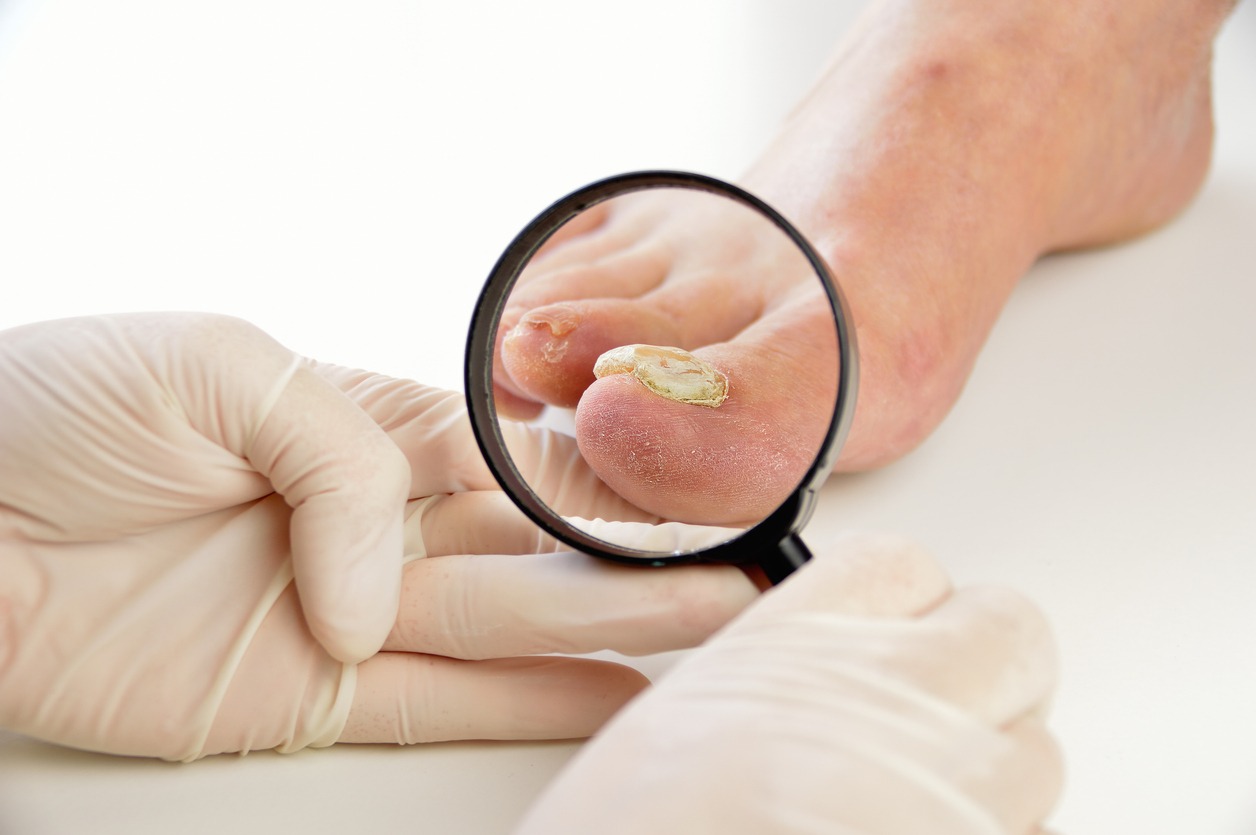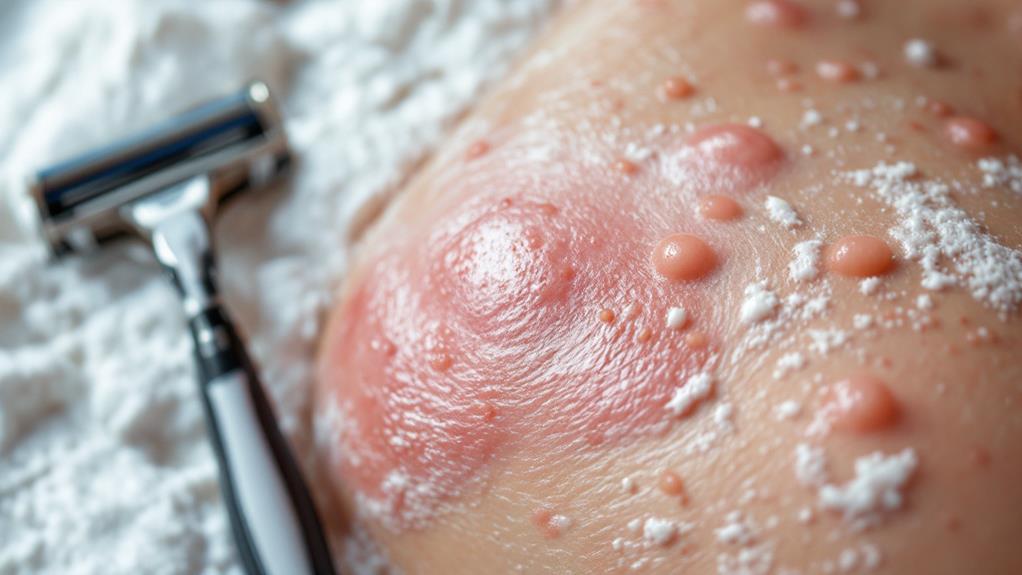What Is Carvacrol and How Does It Affect Nail Fungus?
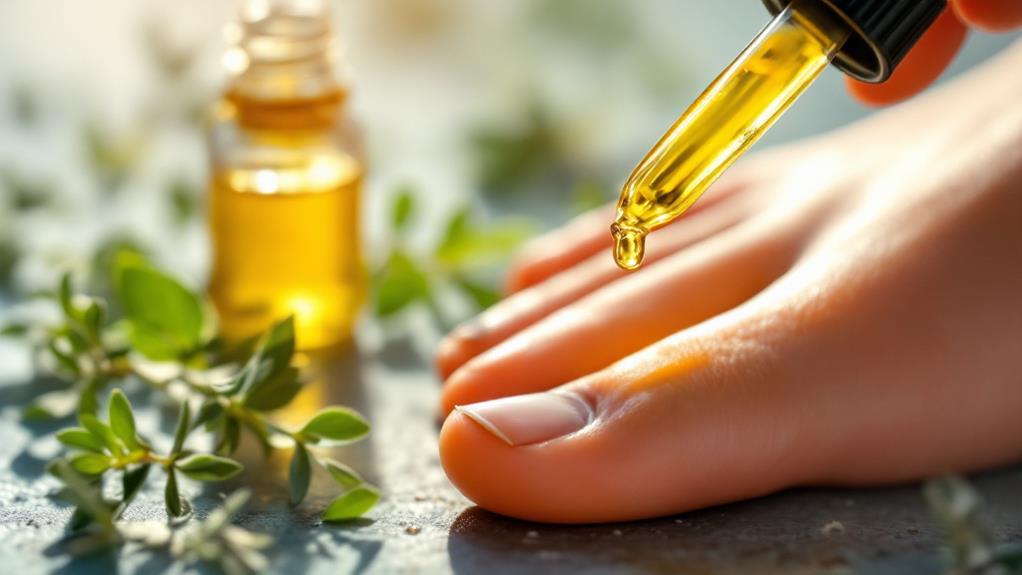
You'll find carvacrol in oregano oil, and it's especially potent against nail fungus. It works by disrupting the cell membrane of fungi, leading to cell death. Carvacrol reduces the expression of genes linked to biofilm formation, tackling both the source and resilience of the infection. It's a safer and effective alternative compared to some conventional treatments, with fewer side effects and a lower risk of resistance. Apply diluted oregano oil regularly to maintain healthy nails and prevent fungal infections. There's an interesting depth to how carvacrol works, and there's more to uncover about its benefits.
Understanding Carvacrol
Why is carvacrol gaining attention in the fight against nail fungus? You might be interested to know that carvacrol, a compound found in oregano oil, is making waves because of its impressive antifungal activity. It targets Candida albicans, a primary culprit behind nail fungus, by disrupting the cell membrane integrity. This disruption isn't just superficial; it leads to cell death, effectively halting the growth of these stubborn fungi.
Carvacrol's ability to combat fungi like Candida albicans is not just limited to destroying existing cells. It can also reduce the expression of genes crucial for biofilm formation, which is often a key factor in the persistence and resistance of nail infections. This means it can tackle both the cause and the resilience of the fungus, offering a two-pronged attack that many traditional treatments can't match.
Moreover, carvacrol is valued for its natural origin and low toxicity, presenting a safer alternative with fewer side effects compared to conventional antifungal medications. By altering the permeability of fungal cell membranes, carvacrol guarantees the leakage of vital components, rendering the fungi powerless and providing you a natural edge in the fight against nail fungus.
Carvacrol's Antifungal Properties
Carvacrol, a powerhouse compound in oregano oil, shines for its potent antifungal properties. It effectively tackles nail fungus by inhibiting the growth of common pathogens like Candida albicans and dermatophytes. When you use carvacrol, you're targeting the fungal cells' very survival mechanism. It alters the cell membrane permeability, causing crucial components to leak out, leading to cell death. This makes carvacrol not just effective, but efficient at low concentrations, acting as a natural alternative to traditional treatments.
The minimum inhibitory concentration (MIC) of carvacrol demonstrates its strength against diverse fungal strains, meaning you don't need much to see results. Another impressive feature is how it disrupts biofilm formation in fungi. Biofilms are protective shields that fungi build around themselves, making them hard to treat. Carvacrol breaks these down, enhancing the efficacy of any antifungal regimen you might be evaluating.
Moreover, oregano oil, rich in carvacrol, often shows better results than some conventional medications. Plus, it comes with fewer side effects and a lower risk of resistance. So, if you're battling nail fungus, carvacrol offers a compelling, natural option to evaluate.
Nail Fungus Causes and Symptoms

Nail fungus, or onychomycosis, thrives in warm, damp environments, making it a common issue, especially for those with sweaty feet or who frequent communal showers. This condition is often caused by dermatophyte fungi, candida, and thrush. If you wear tight or ill-fitting shoes, the constant pressure and friction can damage your nails and skin, creating a perfect breeding ground for fungal infections.
Symptoms of nail fungus can be quite noticeable. You might observe discoloration, usually a yellow or white spot under the tip of your nail. Over time, the nail could thicken, making it difficult to trim and maintain. Crumbling edges are another telltale sign, and you might even experience pain or discomfort. These symptoms often lead to embarrassment, causing many to hide their nails or avoid certain activities.
Certain health conditions, such as diabetes and psoriasis, can weaken your immune system, making you more prone to these infections. Furthermore, environments like communal showers and swimming pools increase the risk of contracting nail fungus, as they provide the moist and warm conditions fungi love. Being aware of these factors can help you take preventive measures against nail fungus.
How Carvacrol Targets Fungus
Although nail fungus can be a stubborn condition to tackle, carvacrol offers a promising natural solution. Found in oregano oil, carvacrol exhibits potent antifungal properties, especially against common pathogens like Candida albicans and dermatophytes. These pathogens are notorious for causing nail fungus, but carvacrol effectively disrupts their cell membrane integrity. When the fungal cell membranes break down, there's a leakage of cellular contents, which ultimately leads to cell death. This process considerably reduces the viability of the fungus and halts its growth.
Carvacrol doesn't stop there. It alters the hydrophobic properties of the fungal cell structures, making it difficult for the fungus to form biofilms. Biofilms are protective layers that help fungi persist and resist treatments. By preventing biofilm formation, carvacrol further diminishes the ability of the fungus to thrive and spread. Research indicates that carvacrol's minimum inhibitory concentration (MIC) varies with different fungal strains, showcasing its potent ability to inhibit fungal growth across multiple types.
In practical applications, carvacrol's antimicrobial activity has proven effective, highlighting its potential as a natural alternative for treating fungal nail infections. With its multifaceted approach, carvacrol targets fungus thoroughly and efficiently.
Comparative Effectiveness of Carvacrol
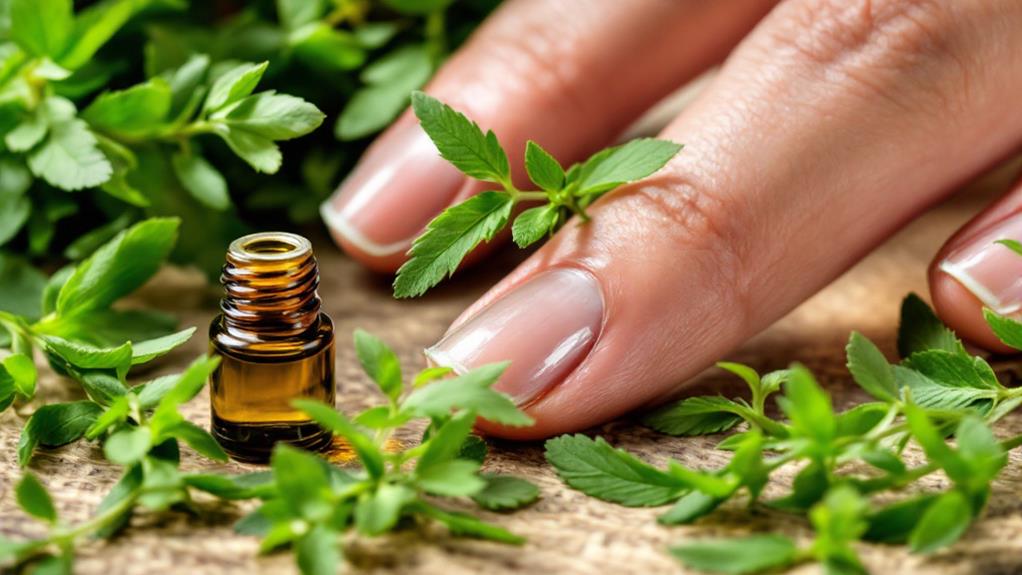
When evaluating the effectiveness of carvacrol, it's clear that this compound outshines many traditional antifungal treatments. Carvacrol, a key component of oregano oil, boasts impressive antifungal properties. It's particularly effective against fungi responsible for nail infections, like Candida albicans and dermatophytes. Studies show that carvacrol can considerably inhibit the growth of these fungal cells, making it a strong contender in the battle against nail fungus.
By altering the permeability of fungal cell membranes, carvacrol leads to cell death, effectively combating nail fungus. This mechanism offers a natural alternative to conventional treatments, which often come with bothersome side effects. Research indicates that carvacrol's effectiveness often surpasses that of standard antifungal medications. This makes it a promising option for those seeking natural remedies without compromising efficacy.
Moreover, the use of carvacrol in treating nail fungus is associated with fewer side effects compared to traditional antifungal treatments. While conventional medications can lead to considerable adverse reactions, carvacrol provides a more gentle approach. Its strong antifungal properties, combined with its natural origin, present a compelling case for considering carvacrol as a viable option in managing nail fungus.
Using Carvacrol for Nail Fungus
Carvacrol offers a straightforward and natural approach to tackling nail fungus, especially through the use of oregano oil. Known for its potent antifungal properties, carvacrol effectively combats common nail fungi like Candida albicans and dermatophytes. This powerful antifungal agent works by disrupting the cell membrane integrity of fungal cells, leading to their death and inhibiting growth. Here's how you can benefit from using carvacrol:
- Potency at Low Concentrations: Research has shown that carvacrol's minimum inhibitory concentration (MIC) is effective at low doses, making it a potent option for treating nail fungus without needing high amounts.
- Regular Application for Long-term Health: Consistent use of diluted oregano oil, rich in carvacrol, can promote nail health and prevent fungal infections from returning. It's an effective method to keep your nails healthy over time.
- Safer Alternative to Medications: Since carvacrol is a natural compound, it presents a lower risk of side effects compared to traditional antifungal medications, offering a safer choice for those looking for holistic treatments.
Incorporating carvacrol into your nail care routine can provide a natural and effective remedy against nail fungus, ensuring healthier and fungus-free nails.
Dosage and Application Tips

To improve the benefits of carvacrol in combating nail fungus, understanding the proper dosage and application techniques is crucial. For most nail fungus cases, start by applying 2-3 drops of diluted oregano oil to the affected area 2-3 times daily. If the condition is more severe, you might need to apply 4-5 drops twice a day. Always remember to dilute carvacrol with a carrier oil, such as coconut or olive oil, to minimize skin irritation.
Before you begin regular use, conduct a patch test to verify you don't have any allergic reactions or sensitivities to carvacrol. Consistency is fundamental; it could take several weeks or even months before you notice visible improvements and complete nail regrowth. Keep a close eye on your nail's condition, and adjust the dosage as needed. For persistent or severe cases, consulting with a healthcare professional is a wise step.
Safety and Side Effects
Understanding the safety and potential side effects of carvacrol is vital for anyone considering its use against nail fungus. Carvacrol is typically safe for topical use, but you should dilute it with a carrier oil to avoid skin irritation. A patch test is advisable due to potential side effects such as nausea, dizziness, or allergic reactions. Here's a quick guide to keep in mind:
- Dilution is Key: Always mix carvacrol with a carrier oil to guarantee it's gentle on your skin. This reduces the risk of irritation when applied to your nails.
- Watch for Reactions: Before full application, perform a patch test to check for adverse reactions. If you experience symptoms like dizziness or nausea, it's important to discontinue use.
- Limit Usage: Overuse can lead to gastrointestinal discomfort, including abdominal pain and vomiting, especially if not properly diluted.
Furthermore, individuals on medications should proceed with caution due to possible interactions with carvacrol. Pregnant or breastfeeding individuals should consult a healthcare provider before using it, as carvacrol's safety for these groups hasn't been conclusively established. Remember, understanding these precautions will help you use carvacrol safely and effectively.
Supporting Nail Health
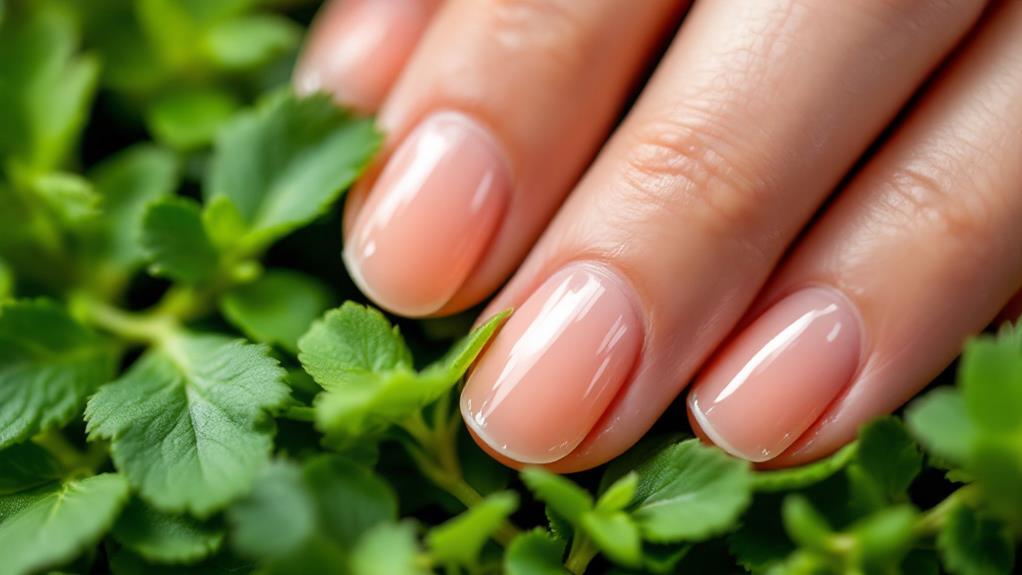
After considering the safety and potential side effects, let's investigate how carvacrol plays a significant role in supporting nail health. Carvacrol, found in oregano oil, possesses strong antifungal properties that make it a powerful ally against nail fungus. If you're dealing with pathogens like Candida albicans or dermatophytes, incorporating carvacrol into your nail care routine can help combat these stubborn infections.
By regularly applying carvacrol, you can support nail health by reducing fungal growth. This compound works by altering cell membrane permeability in fungi, which leads to cell death and effectively treats fungal nail infections. As a result, your nails not only recover from existing damage but also become more resilient against future attacks.
Additionally, carvacrol's antimicrobial effects are not limited to just treating current infections. They also help prevent recurrent fungal issues, offering long-term support for maintaining healthy nails. By integrating carvacrol into topical treatments, you can improve their overall efficiency, potentially shortening the treatment duration compared to conventional antifungal medications. So, if you're seeking a natural and effective way to elevate your nail health, carvacrol could be the solution you need.



